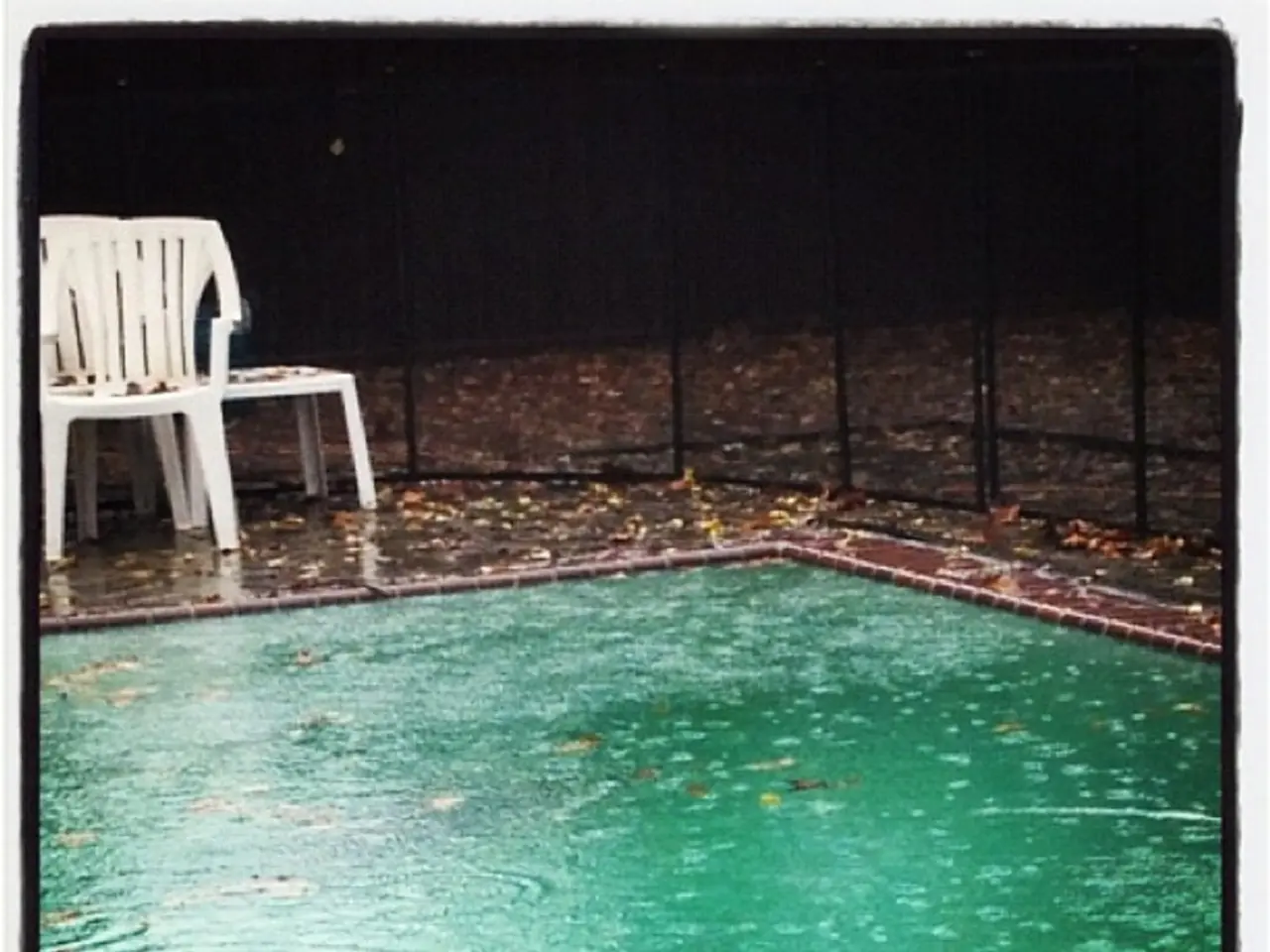Preventing Your Pool Pump from Overheating Due to Dry Running: Safety Measures Explained
Preventing Dry-Running Damage to Your Pool Pump: A Guide for Pool Owners
Pool pumps are the heart of a pool's circulation system, maintaining water quality and safety. However, without proper care, they can fall victim to dry-running damage, leading to costly repairs and potential safety hazards. Here's what you need to know to prevent this from happening.
Preventing Dry-Running Damage
To prevent dry-running damage, the key practice is to ensure the pump is always primed and never runs without water. This involves:
- Priming the pump before starting: Fill the pump housing with water to maintain suction and prevent the motor and impeller from overheating or wearing irreversibly.
- Regularly monitoring water flow and pressure: Detect any sign of air leaks, clogs, or drops in suction that could cause the pump to lose prime and run dry.
- Inspecting and maintaining pump seals, gaskets, and o-rings: Prevent air leaks which can cause the pump to lose prime—lubricate seals with silicone-based lubricant and replace worn seals or o-rings promptly.
- Keeping skimmer and pump baskets clean: Avoid blockages that restrict water flow and lead to pump strain or dry running.
- Maintaining proper pool water levels: Especially in cold weather, prevent skimmers from running dry and causing the pump to lose prime.
- Shutting off the pump immediately if it runs dry: Consult a professional before further use to avoid costly pump damage.
Risks and Associated Costs
Ignoring dry-running protection can lead to several issues, including:
- Overheating and irreversible damage to the pump impeller and motor.
- Air leaks causing loss of prime and pump inefficiency.
- Water leaks from worn seals that may damage pool surroundings and equipment.
- Escalating plumbing or pump system failures leading to expensive repairs or total replacement.
- System downtime and interrupted pool usage.
- Potential safety hazards such as electrical issues from damaged equipment.
Understanding Warranty Coverage
Most warranty coverage specifically addresses dry-running damage, but understanding the fine print is crucial for claim success. Qualifying scenarios include manufacturer defects discovered within 30 days, documented sensor failures leading to dry-run damage, and installation-related issues when using certified contractors.
Common Signs of Dry-Running Damage
Performance degradation follows a predictable pattern, with reduced water flow and pressure, inconsistent operation, and unexpected cycling on and off being early signs of dry running. Unusual grinding or screeching noises indicate seal deterioration, while increased vibration suggests impeller damage.
The Consequences of Ignoring Dry-Running Protection
Every year, thousands of pool owners face costly repairs due to dry-running pump damage, accounting for 35% of all pool water pump failures. The disrupted filtration system allows debris and contaminants to accumulate, potentially overwhelming your pool's chemical balance. Chlorine distribution becomes uneven, leading to dangerous "dead zones" where sanitizer levels drop below safety thresholds.
In extreme cases, non-functioning pool pumps can violate local health codes, potentially resulting in forced pool closure and fines. Moreover, the increased risk of waterborne illnesses, as inadequate circulation prevents proper sanitization, can pose a significant health risk.
Taking Action
Regular inspections and preventive care are the most cost-effective strategies to avoid dry-running pump damage and its risks. If you suspect your pool pump has run dry, contact warranty service within 24 hours of incident detection through their online portal or hotline. Photograph any visible damage immediately upon discovery. Keep original purchase documentation, as warranty coverage is tied to the original owner and installation date.
By following these guidelines, you can ensure your pool pump continues to serve as the heart of a safe and enjoyable pool environment.
[1] Pool and Spa News. (2021). Common Causes of Dry Running. Retrieved from https://www.poolspanews.com/equipment/common-causes-of-dry-running/
[2] Pool Corp. (2021). Preventing Dry Running. Retrieved from https://www.poolcorp.com/en/pool-owners/pool-care/preventing-dry-running
[3] Hayward Pool Products. (2021). Preventing Dry Running. Retrieved from https://www.haywardindustries.com/pool-spa/pool-care/preventing-dry-running
[4] In The Swim. (2021). How to Prevent Dry Running. Retrieved from https://www.intheswim.com/blog/how-to-prevent-dry-running
[5] Pentair. (2021). Preventing Dry Running. Retrieved from https://www.pentair.com/en/residential/pool-spa/pool-care/preventing-dry-running
- Implementing regular workplace-wellness practices, such as fitness-and-exercise routines and skin-care regimens, can contribute to overall health-and-wellness and improve one's lifestyle at home and garden.
- Just as maintaining a pool pump ensures water quality and safety, taking steps to prevent dry-running damage can safeguard your investments and promote the longevity of other equipment, like home appliances and electronics.
- Regularly inspecting and maintaining the seal, gaskets, and o-rings of various home appliances, such as refrigerators and coffee makers, can prevent air leaks and improve their efficiency, much like priming and monitoring a pool pump prevents dry-running damage.




